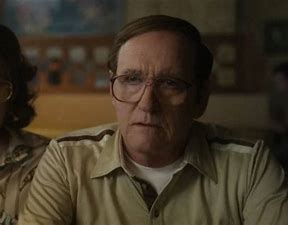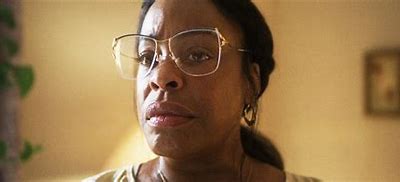The Gospel of Ryan Murphy’s Jeffrey “Dahmer” is in ten chapters.
So long as the serial killer chooses his victims from the ever-shifting population of drifters, prostitutes, and the disenfranchised in America–those who seem to lack identity–he can operate with impunity for a very long time. He will be caught only through some blunder of his own, not through police investigation
Joyce Carol Oates: The New Yorker 1994
The “serial killer” with no apparent motive for his monstrous crimes except the gratification of desire has become, in the nineties, an icon of pop culture. The most difficult of criminals to trace, since his connections with his victims are almost always imagined, such a killer is a romantic figure in reverse: sexually obsessed, isolated by his compulsions, the very portrait of demonic possession: one whose entire outward life has been constructed as a means of satisfying the forbidden.
Joyce Carol Oates: The New Yorker 1994.
.

1. The Series Opens at the End of His Killing Spree.
“Dahmer-Monster” opens in Milwaukee, Wisconsin, in 1991 at the end of Jeffrey Dahmer’s 13-year-long crime spree. Dahmer’s intended eighteenth victim, Tracy Edwards (Shaun J. Brown), manages to escape from Dahmer’s apartment. He goes to the police, who reluctantly arrest Dahmer, eventually discovering that, over three decades, he had murdered, dismembered, and eaten the bodies of seventeen young men.
2. The Series Unfolds Backwards in Time.
Like Murphy’s masterpiece “The Assassination of Gianni Versace,” the series unfolds backward in time, with some scenes being shown numerous times, from different angles, in other episodes. We see him as a strange, bespectacled little boy (Josh Braaten, perfection) who likes to give his teacher tadpoles from a pond and, when she does not want them and gives them to another boy, he steals them back and kills them. Next, there’s the teen who is obsessed with dissecting roadkill. His lab is in his back garden, courtesy of his dad (Richard Jenkins), a chemist. Then there are the years he spends with his grandmother, a caring but stern and religious woman played by a superb Michael Learned, and, finally, to the dreaded apartment in Milwaukee where his next-door neighbor Glenda (Niecy Nash) called the police on innumerable occasions, because of the noise the smells coming from there, but got zero response.
3. “My Friend Dahmer”
Many of the childhood scenes we witness in Episode 2 of the series were covered more sympathetically and interestingly by director Marc Myers in his 2017 film “My Friend Dahmer” based on John “Derf” Backderf’s graphic novel. Derf had been friends with Dahmer in high school in the 1970s until the summer of 1978 – Ross Lynch is sensational as Dahmer, with Alex Woolf as Derf. That was the summer that high school ended, and Dahmer began his killing spree when he picked up hitchhiker Steven Hicks who was either going to or returning from a concert. Hicks was never seen again. Dahmer would not claim his second victim until 1987.

4. Both Rushed and Too long
With sixty hours of viewing, Dahmer-Monster” feels both rushed and too long, and, at times, the series comes very close to being exploitative and voyeuristic. There is even a sidetrack into the life of another serial killer, John Wayne Gacy – we get to witness one of his horrific murders – which was not needed. With a little more care in the writing process and the editing room, one feels that the series could probably have been pruned to nine episodes with an epilogue or coda.
5. Evan Peters
Like “Versace’s” Darren Criss, “Dahmer” boasts a striking central performance by Murphy’s favorite, Evan Peters (complete with a Midwestern accent). However, while Criss was able to play to the gay Zeitgeist, it’s tough to spend time in the company of Dahmer. The seediness gets to you.
6. Feeling Unclean
And it’s especially tough going when the viewer is a gay man. Dahmer picked up most of his victims in gay bars, and from there, he would take them to a bathhouse or his grandmother’s house and, later, to his apartment, where he would proceed to drug them. The come-on smile and the can-I-buy-you-a-drink motions of a typical gay pickup get intertwined with Dahmer’s intentions: he didn’t want to have you; he wanted to keep you.
7. Dignity for the Victims
In “Versace,” four out of the five victims got a backstory, and their memory was treated with profound respect. With seventeen victims, this is impossible, and “Dahmer” suffers significantly because of it. Only Tony Hughes (Rodney Burnford, excellent), the gay-Black-deaf young man to whom, the series suggests, Dahmer may have had a slight emotional attachment, gets an episode to himself.
8. The Police
One of the best aspects of the series is how it holds the Milwaukee police accountable. They are the other villains in this story. With one missed opportunity after another, they didn’t care. Most of Dahmer’s victims were gay men of color who were regarded as disposable by a racist and homophobic police force.
9. Victim Konerak Sinthasomphone
Dahmer told fourteen-year-old Sinthasomphone (his youngest victim) that he would pay him if he allowed him to take some photographs back at this apartment. Astonishingly, although he was the younger brother of a boy whom Dahmer assaulted in 1998 but who had managed to escape – his family being Laotian, the police and the judge took no interest in the case, and Dahmer walked – he said yes. Drugged and with a hole drilled into his skull, Sinthasomphone still managed to escape Dahmer’s apartment and the building but was returned to Dahmer by the police against the objections raised by Glenda. Dahmer, playing to the police’s innate homophobia, insisted that Sinthasomphone was drunk, nineteen and that it was a “boyfriend thing”. The two officers involved were never punished.

10. A Feast of Great Performances.
Despite all its failings, “Dahmer-Monster” is filled with brilliant performances. In addition to Peters, Learned, Braaten, and Burnford, Nash does stellar work as next-door-neighbor Glenda, and Jenkins is superb in a heartbreaking performance as Dahmer’s father.
https://thebrownees.net/essay-one-1-2-65-queer-films-under-the-hays-code-1934-1967/
https://thebrownees.net/essay-one-1-34-queer-films-made-under-the-hays-code-1934-1956/
https://thebrownees.net/essay-one-2-31-queer-films-made-under-the-hays-code-1957-1967/
https://thebrownees.net/essay-one-table-65-queer-films-made-under-the-hays-code-1934-1937/
https://thebrownees.net/essay-two-45-queer-films-from-1967-1976-queer-cinema-comes-out/


















